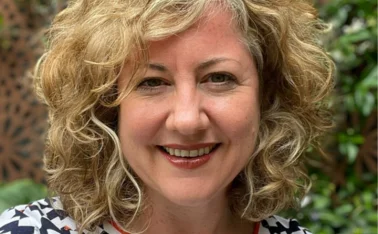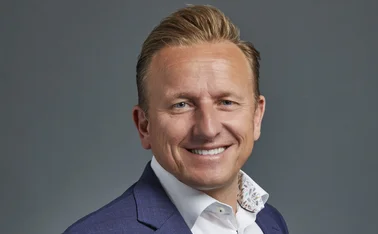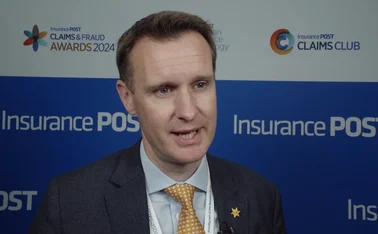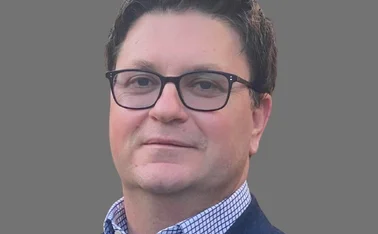
Diversity: How to implement a more eclectic workforce

Need to know
- The second edition of the Dive In festival is held this month to enhance diversity and inclusion in the insurance industry
- Uniform workforce may stem from a lack of awareness of the breadth of roles available in the sector
- Companies with a diverse workforce get better financial results than competitors
Historically, the insurance industry has lacked diversity. When you imagine a typical insurance firm, you may picture a male, pale and stale boardroom. Increasingly, though, the industry has been implementing a range of initiatives to draw in a more eclectic, fresh workforce.
Insurers have become aware of the need to strive for more diversity and inclusion. This month, the second edition of Lloyd's Dive In festival kicks off. The industry will be celebrating its D&I achievements and discussing what else it can do.
"Implementing successful diversity initiatives is an ongoing process," says Jennette Newman, partner and head of Lloyd's and London Market at BLM. "Policies and procedures need to be embedded into an organisation's culture and be led from the top. Diversity and inclusion is about getting the best people in the team, regardless of prejudice and unconscious bias.
"For many, it seems like a common sense business rationale. Yet we continue to hear that the insurance sector falls short. That's why I believe initiatives such as Dive In really hit the mark. It is innovative and engaging, both at grassroots and strategic levels."
Putting variety at the forefront
Dive In aims to put variety in the forefront of insurers' minds instead of promoting targets. Other initiatives have taken a different approach. The Gender Inclusion in Insurance Network, for instance, has set a goal for all insurers to sign up to the Women in Finance Charter. And Link, the LGBT Insurance Network, has set itself the mission to create and maintain workplaces that attract and retain the best LGBT talent to the insurance industry.
"The historical lack of diversity in insurance stems from a lack of awareness about the breadth of roles available in the insurance sector," says Julie Thomas, diversity, inclusion and wellbeing manager at Zurich.
"When people think of insurers, they might stereotype a middle-aged man with a financial degree. But when you actually come to work in the sector, you can see a whole range of opportunity and that is demonstrated by how long people stay."
Thomas believes that monitoring a workforce and engaging employees to find out what is working best across the workplace is key.
"We have a number of ways, both qualitative and quantitative, to measure if we are succeeding in achieving our D&I aspirations. We look at membership numbers for our four D&I employee resource groups and gather direct feedback from them about our progress and where we still need to improve.
"Zurich also carries out an employee engagement survey, which contains a D&I Index comprising 10 questions that we track against not only the industry but also other high-performing organisations. In relation to customers, we continue to look at our net promoter scores as that is a true reflection of how we are delivering for our customers on a day-to-day basis."
Above-average returns
The Diversity Matters report, published last year by McKinsey, revealed that gender-diverse companies were 15% more likely to have above-average financial returns, a proportion that rose to 35% for ethnically diverse companies.
Ajay Gupta, chief underwriting officer at Charles Taylor Managing Agency, says the industry has made phenomenal progress, although it is still far from its goal. "Building inclusion throughout our business won't happen overnight. Everyone has a role to play to develop their personal awareness and to contribute to making sure we are open businesses, and attracting the best talent to work for us," he says.
In a survey carried out last year by PWC, 85% of CEOs whose organisations have a D&I strategy said it improved their business overall.
"One of the measures of success is seeing more women and minorities in the Lloyd's market and a larger number in senior positions. The fact that Inga Beale is the first female CEO of Lloyd's has been a significant milestone and will hopefully encourage other minorities to aspire to similar heights," Gupta continues.
"Within the larger companies trading in the London Market, job mobility and moving people around different divisions and locations is increasingly common. This has the advantage of bringing in new ways of thinking and creativity into the market."
Insurers seem to be aware of the issue, but how effective can events like Dive In be?
A focal point
Sian Fisher, CEO of the Chartered Insurance Institute, says the festival gives the industry a focal point from which to develop a wider movement.
For instance, Brokerage City Link works with students from London state schools to help them build the skills they need to enter the financial industry.
"Brokerage City Link is very much involved in London schools where there's a range of ethnicity of origin and quite often less privileged backgrounds in terms of education and so on," Fisher says. "There's the geographical element to it and there's a large amount of ethnic diversity within schools around the city and that's all part of the Dive In concept."
She expects the second edition to be more successful than the first one. "Last year, people didn't really know what it was about. But this year, there's a huge enthusiasm about it. Young people and people from the market are quite excited about the events and eager to see how they can get involved."
One of the events organised as part of the Dive In festival is the He For She session, which aims to encourage more men to help women achieve their goals. Together with initiatives like the Women in Finance Charter, it might give the impression that more emphasis is put on gender equality than on, say, ethnic diversity.
However, most insurers view such initiatives as a talking point from which they can promote wider inclusion.
"What I have noticed is that you can apply those actions, applied to gender, to other main groups as well," says Sue Chittock, D&I consultant at Aviva. "This attracts a type of recruitment that works for people who are from Black, Asian or ethnic backgrounds or who are disabled. Gender diversity is probably first on everyone's list but the actions taken can cater towards everyone."
Breaking down stereotypes
Ola Raji, senior broker at Arthur J Gallagher, has always been determined not to get boxed in. "In my younger days, it was extra fuel to my desire to represent my roots and break down any stereotypes or preconceptions I faced," he says. "Now I'm older, I only really remember the diversity issue when someone shares their experience, asks me the question, or I'm at a diversity-related meeting.
"Bar one experience earlier in my career, I have never experienced any discrimination, and the warmth of the London Market and its people is refreshing. I've been blessed to have a good experience but it's not the same for everyone I speak to, so it's an extremely important topic to raise.
He adds: "Globalisation has spread the business we write worldwide and maybe it's time we re-invent diversity to reflect that?"
Jennifer Thomas, head of financial communications at Direct Line, where she also chairs a workstream on gender, says that change has been slow. "You start by looking at the financial industry, which isn't very well-known for its diversity, and then you drill it down to the insurance industry, which is even less known for its diversity.
"The industry is waking up to that and if you look at how things were before, it's definitely changing and looks a lot different to 20 to 40 years ago.
"The change hasn't been enough and it hasn't happened fast enough. Things like Dive In are a great way of trying to accelerate that progress."
Like Chittock, Thomas believes the move for gender equality may have a domino effect that could kick start a bigger push for diversity in the market.
"Although the Women in Finance Charter focuses specifically on women, it's possible that there will be a halo effect from that.
"As soon as you start opening your eyes to one type of diversity, you start to realise all other types. So you will start to think: ‘Now that we have a balance between male and female, what else do we have to look at?'
"The gender debate has actually been useful in raising the awareness of diversity and inclusion in its entirety but pushing forward a wider agenda. You have to start somewhere and gender and inclusion is a massive area that has many facets."
Wider inclusion key
Amanda Birkett, UK and Western Europe head of talent and capability at RSA, points out the drive for gender diversity might distract companies from wider inclusion.
"You can hardly open a newspaper without hearing about gender diversity," she notes. "I attended a workshop in the House of Lords that was about generating ethnic diversity, and everyone said that it can be unhelpful to have an emphasis being put on female diversity as it means that some companies are concentrating on that and not on other forms of diversity."
Workforce inclusion can play a crucial role in a business' success. Gupta says that diversity is best for businesses who operate globally and that diversity creates relatable role models for customers.
"Attracting minority groups into the insurance market is challenging. Part of the challenge we have with attracting all types of young people is that insurance is not perceived as an exciting industry to enter," he says.
"In the Lloyd's market, we do not yet have the data that allows us to make informed decisions on which minorities are represented and if we need to target more specific communities.
"Suffice to say that as a global market we need to work harder at attracting more diverse minorities and foreign nationalities to ensure that we stay relevant to our customers. Over 80% of the business we write in Lloyd's comes from outside of the UK, which gives you an indication of why this is important.
Gupta adds: "We have to work harder both in terms of expanding the talent pool but also in attracting minorities. We have to create more role models that reflect our diverse population. Insurance is a knowledge industry and as competition becomes more global, we will need people who have the cultural and language skills to be relevant to our customers.
"Across Lloyd's we are focusing on diversity and inclusion to ensure that we attract and retain the best people to support the growth of our business."
Diversity can lead to innovation
A diverse workforce may help insurers with the innovation they're striving for. "For me it's not about targeting specific groups, it's just about getting a diversity of thought around the table," says Jo Browning, human resources director at Markel International. "If you have a number of ideas and views, then there's more innovation. It doesn't matter what role someone is in or what their background is, it's about the fresh perspective and we're seeing the material benefit of that."
Insurance is purchased by people from all walks of life and potential for innovation is enhanced by D&I. Having a workforce comprising of different backgrounds and experiences ultimately helps to improve the products that insurers are selling. If an insurer has an entirely homogenous workforce, then products are unlikely to develop or reach a broader audience.
"When we talk about diversity, if you keep bringing in different people with different ideas, then they will spot new and different opportunities that the established market would just not see," says Fisher.
However, Ashwin Mistry, chairman of Brokerbility, says that employees who are from minority backgrounds have to prove themselves more than their white male counterparts.
"It's all about position. There are two ends of the spectrum. When I joined the industry, I felt I had to prove myself, all the time," said Mistry.
"I had to be better than my counterparts. But with experience, perceived status, position, it is much different.
"We now live in a global economy and circumstances are much more advanced and forward-thinking. I would not say it has gone away, but it is significantly better. Employ for skill and contribution, not for anything else."
While many insurers will agree that D&I works to enhance business prospects, measuring success proves to be hard work. Most firms want to steer clear of target-led hiring policies as this may lead to discrimination itself.
"Setting aspirations puts in the mindset of everybody what we want to achieve, but what you need to be careful of is that you don't actually discriminate against people by setting the target. So if you have a strong candidate for a job, you can't just say: ‘Well, you're a man, I'm not going to hire you because we need more women,'' says Michael Ryley, partner at Weightmans.
Generating D&I in the insurance industry has been a long and arduous journey and there is still a while to go but the market is hosting a selection of initiatives to keep diversity high on the agenda. Since last year, the Dive In festival has gained momentum and more insurers are both sponsoring and putting on their own Dive In events.
Achievements such as the Women in Finance Charter are paving the way for more widespread successes in D&I and a heightened awareness of the need for diversity is painting a promising picture for the future.
Only users who have a paid subscription or are part of a corporate subscription are able to print or copy content.
To access these options, along with all other subscription benefits, please contact info@postonline.co.uk or view our subscription options here: http://subscriptions.postonline.co.uk/subscribe
You are currently unable to print this content. Please contact info@postonline.co.uk to find out more.
You are currently unable to copy this content. Please contact info@postonline.co.uk to find out more.
Copyright Infopro Digital Limited. All rights reserved.
As outlined in our terms and conditions, https://www.infopro-digital.com/terms-and-conditions/subscriptions/ (point 2.4), printing is limited to a single copy.
If you would like to purchase additional rights please email info@postonline.co.uk
Copyright Infopro Digital Limited. All rights reserved.
You may share this content using our article tools. As outlined in our terms and conditions, https://www.infopro-digital.com/terms-and-conditions/subscriptions/ (clause 2.4), an Authorised User may only make one copy of the materials for their own personal use. You must also comply with the restrictions in clause 2.5.
If you would like to purchase additional rights please email info@postonline.co.uk








